The Angelus: Our Newsletter
Volume 23, Number 9

FROM THE RECTOR: CHRISTIAN UNITY 2021
The Week of Prayer for Christian Unity has its roots in the Episcopal Diocese of New York. The Rev. Paul James Francis Wattson, S.A., born Lewis Wattson in 1863, was still an Episcopal monk and priest, in 1908 when he suggested that the week between the January feasts of Saint Peter and Saint Paul (now known as the Confession of Saint Peter on January 18 and the Conversion of Saint Paul on January 25) be observed as a “Week of Prayer for Christian Unity.” But Wattson, by that time, was on his way to Rome. In 1909, his Episcopal religious community, the Society of the Atonement, for men and women, the latter being led by Mother Lurana White, was received into the Roman Catholic Church as the Franciscan Friars and Sisters of the Atonement. He continued to work for reunion throughout his life. He died in 1940.
Read MoreVolume 23, Number 8
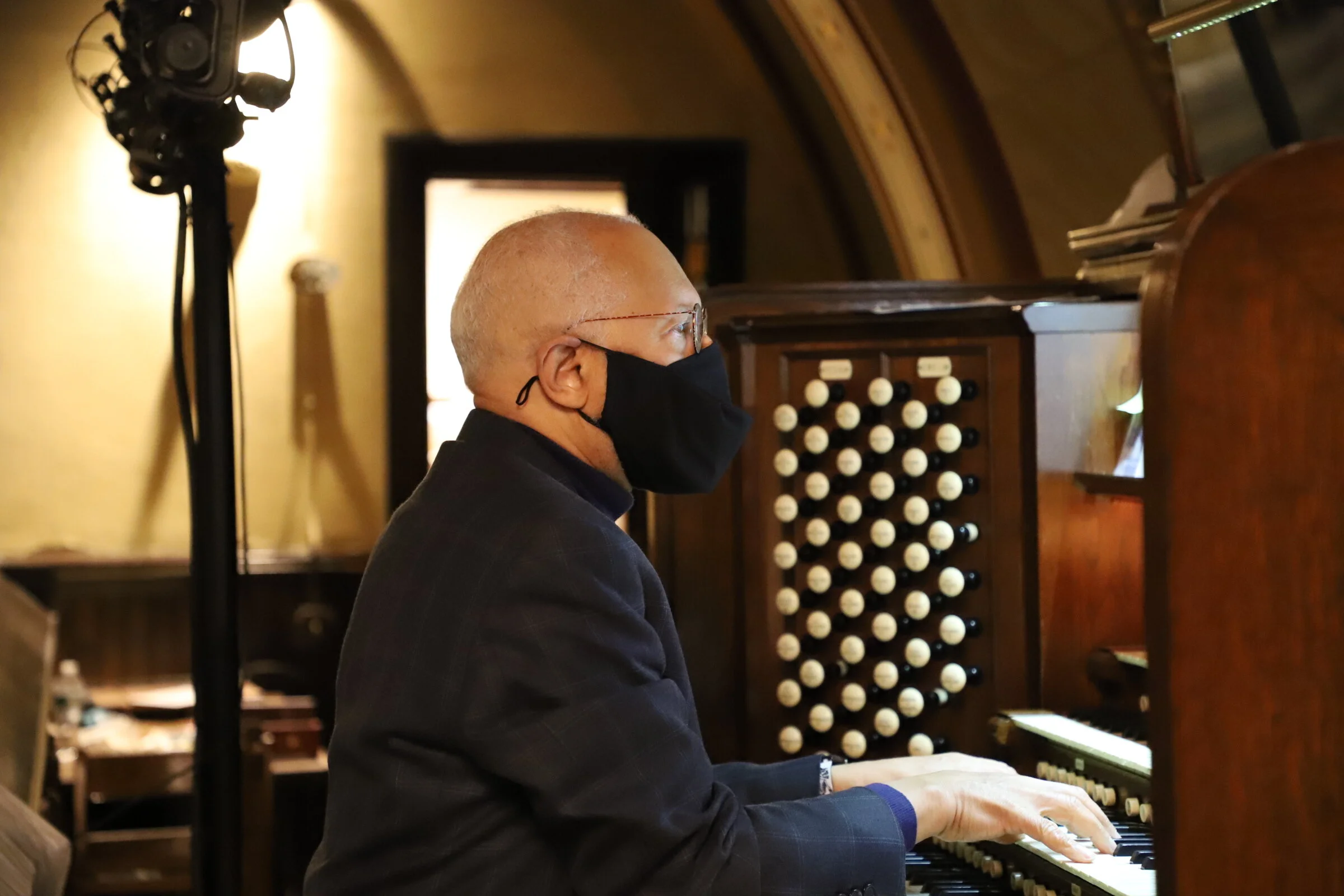
FROM THE RECTOR: LITURGY IN THE TIME OF COVID
Since I became rector in 1999, Ash Wednesday has been by far the day of the year when the greatest number of people enter our church. Some come for the said Masses at 7:00 AM and 8:00 AM. It’s been our custom for Miserere mei by Gregorio Allegri (c. 1582–1652) to be sung during the imposition of ashes at the Sung Mass at 12:10 PM and the Solemn Mass at 6:00 PM. Many, many more just come to be marked on the forehead with ashes and to hear the words, “Remember that you are dust, and to dust you shall return” (The Book of Common Prayer [1979], 265).
Read MoreVolume 23, Number 7
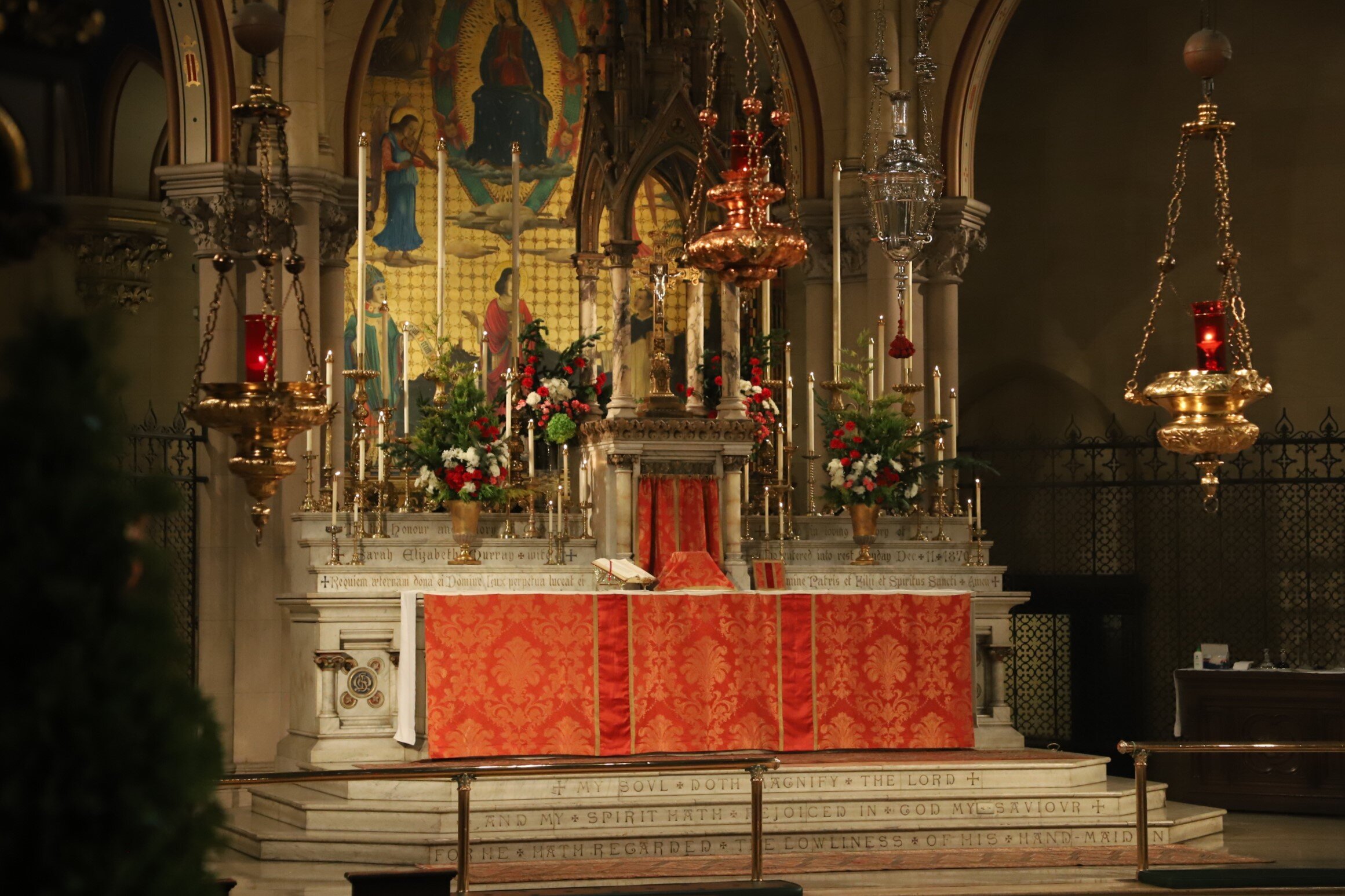
FROM THE RECTOR: EPIPHANY 2021
I usually go to the gym first thing in the morning, right after coffee and Morning Prayer. But Wednesday, January 6, was the Feast of the Epiphany. I was on my Sunday schedule: up early for coffee, Morning Prayer, and to finish writing a sermon. I got to the gym about 3:00 PM, entirely unaware of what was going on in Washington. I walked over to the rows of elliptical machines and treadmills. Above them is a row of five television sets. A mob of Americans had invaded the Capitol and shut down the Congress of the United States. My eyes teared up. The Capitol was breached “at 12:53 PM, led by a group in tactical gear” (“Riot at the U.S. Capitol,” Wall Street Journal, January 7, 2021). This had been going on for over two hours. How could the President, upon hearing this news, not immediately order whatever forces were on hand to secure the Capitol and then go to the White House Briefing Room to address the nation and condemn the insurrection?
Read MoreVolume 23, Number 6

FROM THE RECTOR: CHRISTMAS AND EPIPHANY
The Draft Proposed Book of Common Prayer and Other Rites and Ceremonies of the Church (1976) proposed three possible gospel lessons for the Second Sunday after Christmas Day. There had been no proper (that is, collect and lessons) for this Sunday in the medieval missals “though it occurs four years out of every seven” (Shepherd, The Oxford American Prayer Book Commentary [1950], 106-07). In 1928, the story of the return of the Holy Family from Egypt was appointed (Ibid.).
Volume 23, Number 5
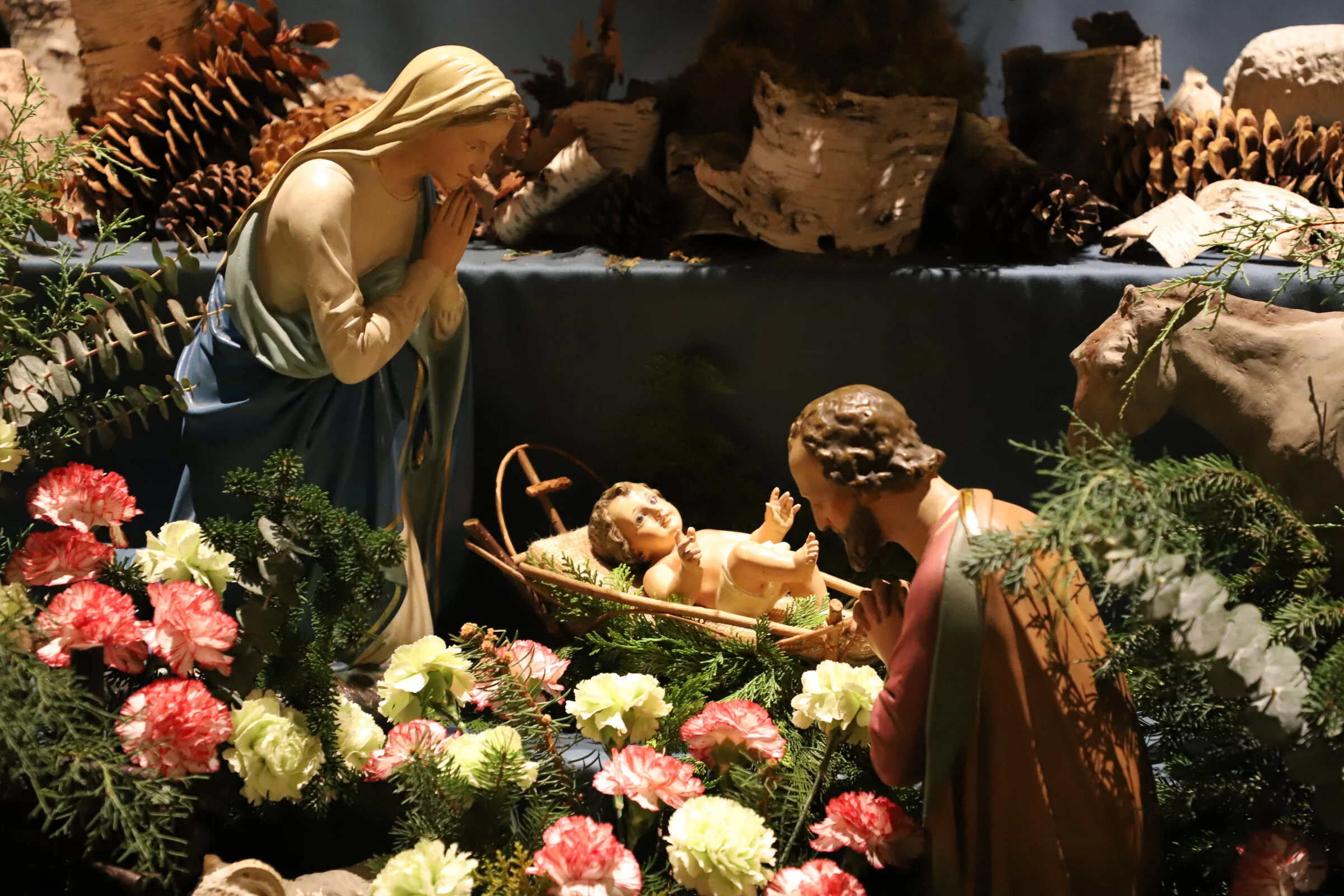
FROM THE RECTOR: MATTHEW’S CHRISTMAS STORY
Prayer Book Studies 19: The Church Year (1970) described its decision to follow the Roman Catholic Church’s then-new lectionary and assign Matthew’s story of Jesus’ annunciation, birth, and naming (Matthew 1:18–25) to the Fourth Sunday of Advent in Year A. Since 1549, Matthew had been the gospel for the First Sunday after Christmas Day. Brother Thomas Bushnell BSG reminded me that though Luke’s story of Jesus’ birth was not read during Holy Communion, Morning Prayer, which included Luke’s story of Jesus’ birth, always preceded Holy Communion on Christmas Day (until the adoption of the 1892 Prayer Book—a subject for another day). The gospel for Christmas Day in the Christian West is anciently the beginning of John’s gospel. The present lectionary means that one of the two stories of Jesus’ birth is only heard at the Eucharist once every three years in Advent—and never at Mass during the Christmas Season.
Read MoreVolume 23, Number 4

FROM THE RECTOR: CHRISTMAS 2020
Reservations are coming in for the 4:00 PM Christmas Eve service and the 11:00 AM Christmas Day service. We hope we can seat everyone who makes a reservation on or before Monday, December 21, 2020. Reservations will be made on a first-come/first-served basis. The total seats available to be assigned will be determined by the order in which reservations are made for households (some more than a couple) and individuals. Instructions for making reservations can be found here. The services on Christmas Eve and Christmas Day will be live-streamed on Saint Mary’s Facebook page. I will be celebrant and preacher on Christmas Eve, Father Jay Smith on Christmas Day.
Read More2020 Christmas Eve & Christmas Day In-person Worship Reservations
2020 Christmas Eve & Christmas Day
In-person Worship Reservations
On Christmas Eve, the church will be open at 3:00 PM. At 4:00 PM, Dr. David Hurd and members of the parish choir will present a short program of Christmas music. The Holy Eucharist will begin at 4:10 PM. We expect the service to be over by 5:15 PM. The Rector will be celebrant and preacher.
On Christmas Day, the church will be open at 10:00 AM. A choral prelude will begin at 10:50 AM. The Holy Eucharist will be celebrated at 11:00 AM. The Reverend James Ross Smith will be celebrant and preacher. A quartet from the parish choir will sing. As is our custom, the Mass on Christmas Day will conclude with the praying of the Angelus.
Seating is limited. If you want to attend Mass on Christmas Eve and Christmas Day, please send two separate emails, one for each service.
The pews at Saint Mary's are all numbered. To reserve space for you and your household, please send the following information:
1. The service you wish to attend.
2. The names of the persons for whom you are making a reservation.
3. Contact information for all persons included in a reservation: name, telephone number, and email address. For children, identify them as your child.
4. Please let us know of any special seating requests or needs. We will accommodate as we are able.
5. Seats are assigned on first come first serve basis.
6. A waiting list will be started, if needed.
7. If your plans change and you cannot attend, please let us know so that we can offer seats to persons on the waiting list.
Click here to email your reservations to Chris Howatt in the parish office.
Please make your reservation by the close of business on Monday, December 21, 2020.
Seating will be confirmed by email after December 21, 2020.
The Church of Saint Mary the Virgin
145 West Forty-sixth Street
New York, NY 10036
Phone: 212.869.5830
Website: www.stmvirgin.org
Read MoreVolume 23, Number 3

FROM THE RECTOR: CONSECRATION ANNIVERSARY
Saturday, December 12, 2020, was the one hundred twenty-fifth anniversary of the consecration of our present church home. Almost everything about the church complex was new. In The Story of St. Mary’s (1931), we read from that day’s New York Evening Post . The headline was, “The New Protestant Episcopal Church Consecrated by Bishop Potter.” The article began: “At 10:30 A.M. today Bishop Henry C. Potter officiated at the consecration service of the Church of St. Mary the Virgin, on West 46th St. The bishop was received at the porch of the rector, the Rev. Thomas McKee Brown, his assistants, the Rev. Al. Mason and the Rev. F. A. Staunton, and the Board of Trustees, Beverly Chew, Haley Fiske, Edward H. Clarke, R. Whiting Pierson and William H. Lane.
Read MoreVolume 23, Number 2

FROM THE RECTOR: SESQUICENTENNIAL MASS
Newbury Frost Read (1887–1950) in The Story of St. Mary’s: The Society of the Free Church of St. Mary the Virgin New York City 1868–1931 (1931) quoted a newspaper account of the opening service of our parish: “On the Patronal Festival, Thursday, Eight December 1870, the Church was opened, and was dedicated by the Right Reverend Horatio Southgate, sometime Bishop of Constantinople" (page 26). On July 23, 1892, Sara Louie Cooke died. She had made St. Mary’s “her residuary legatee” (page 59). It was this legacy that enabled the purchase of the land and the building of our second church home. The cornerstone of the new church was laid on December 4, 1894. The new church opened one year later, on Sunday, December 8, 1895.
Read MoreVolume 23, Number 1

FROM THE RECTOR: COVID-19 AT ST. MARY’S
We begin the new church year with the church open for public worship only on Sundays. I write on Saturday afternoon, the Eve of Advent Sunday. On Wednesday morning, November 25, Father Jay Smith learned that he was positive for COVID-19. During Evening Prayer on Sunday, November 22, he coughed and sensed that a cold was coming on. His symptoms were, and continue to be, relatively mild. He reports that it feels as if he has the flu. He is at home and in contact with his physician. He is in isolation in a bedroom in the apartment. His husband, José Vidal, is in quarantine. José was tested on Thanksgiving Day for the virus. The rapid test result showed that he was negative. The more accurate test result should be available for him tomorrow or Monday.
Read MoreVolume 22, Number 52
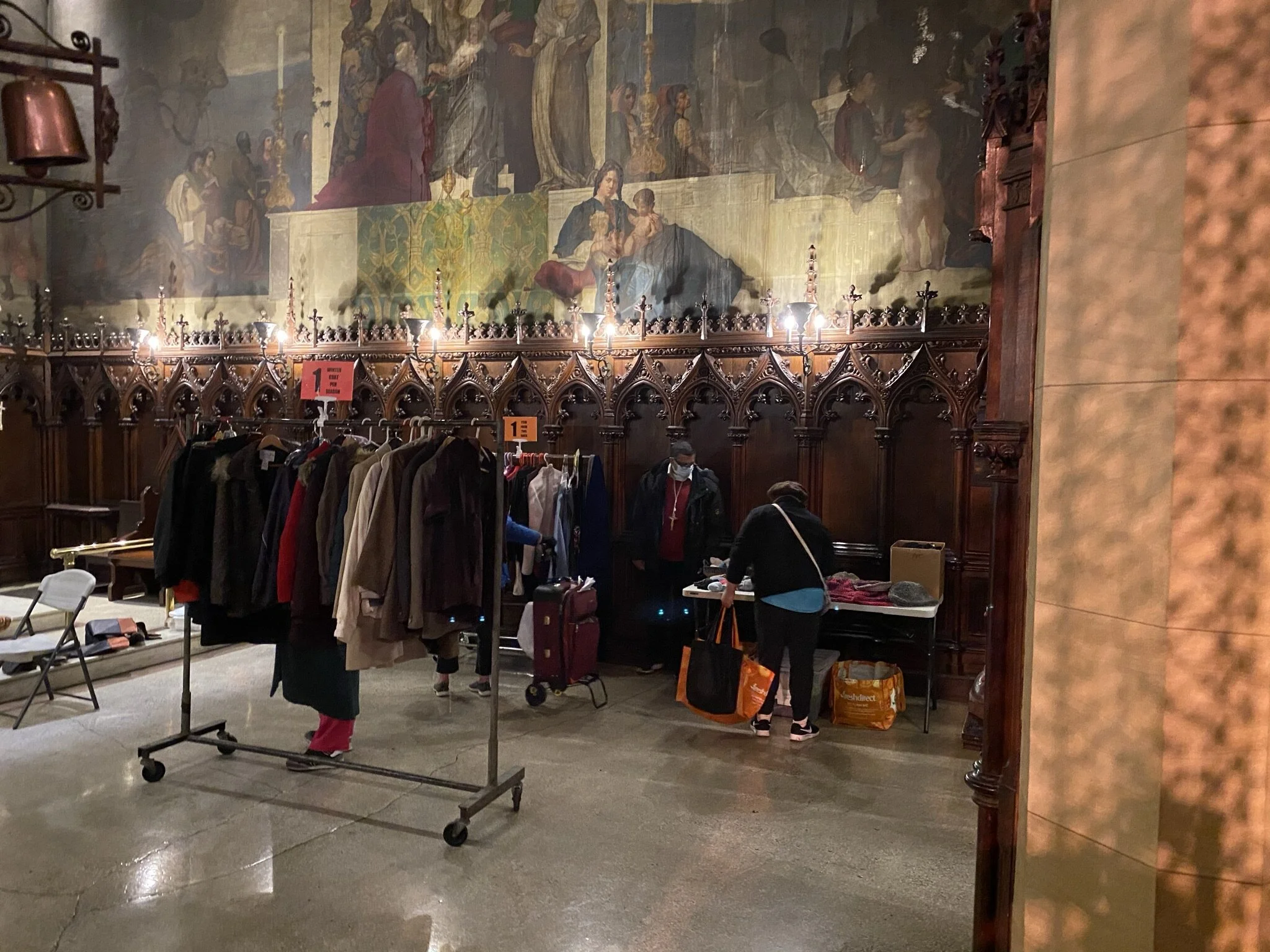
FROM THE RECTOR: A KING WHO WEEPS
The shortest sentence in the New Testament is in John’s account of the Raising of Lazarus. When Jesus sees the tomb where his friend was buried, the evangelist writes, “Jesus wept” (John 11:35). (It’s a three-word sentence in the Greek New Testament, and I suspect it’s still the shortest sentence in that language, too.) I was celebrant and preacher for the Daily Eucharist on Thursday, November 19, 2020. The appointed gospel was from Luke. It includes the only other occasion of Jesus weeping in the New Testament. Compassion is one of the Lord’s virtues.
Read MoreVolume 22, Number 51
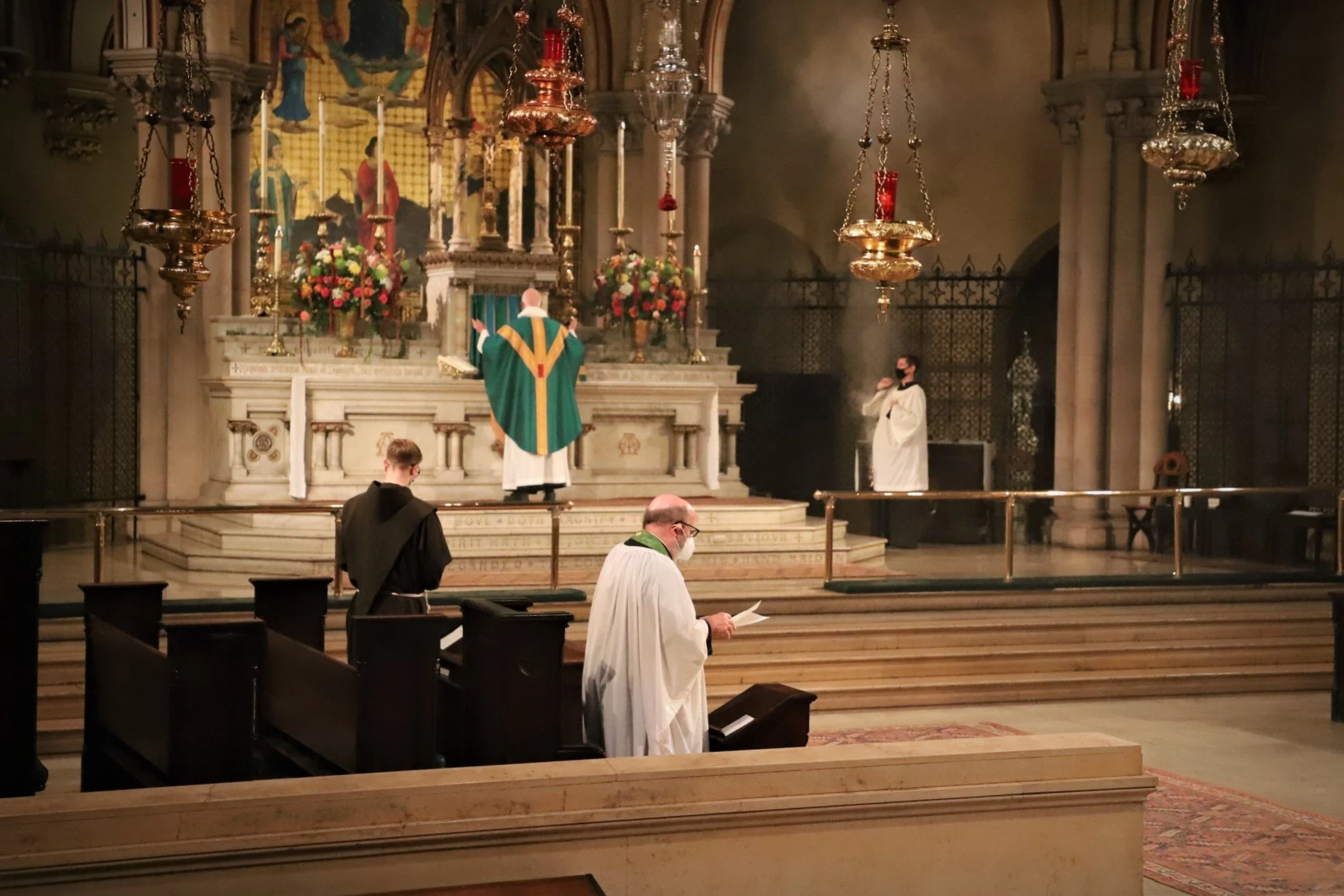
FROM THE RECTOR: ADMINISTRATION NOT CONSECRATION
While looking online for a book review, I came across reviews of the Reverend Dr. Louis Weil’s book Liturgical Sense: The Logic of Rite (2013). I found my copy on the shelf. I came across a quotation that had caught my eye years before, but I don’t think I’ve ever written about it. Vernon Staley (1852–1933) was a priest of the Church of England, a liturgical scholar, and the author of The Catholic Religion: A Manual of Instruction for the Members of the Anglican Communion (1893). It was an important book for generations of Anglo-Catholics. It’s still in print, but I don’t recommend it. Scholarship, not to mention church and society, has moved on. Father Weil's quotation was from a book by Staley that I did not know, The Manual Acts (1913), and it’s spot on.
Read MoreVolume 22, Number 50
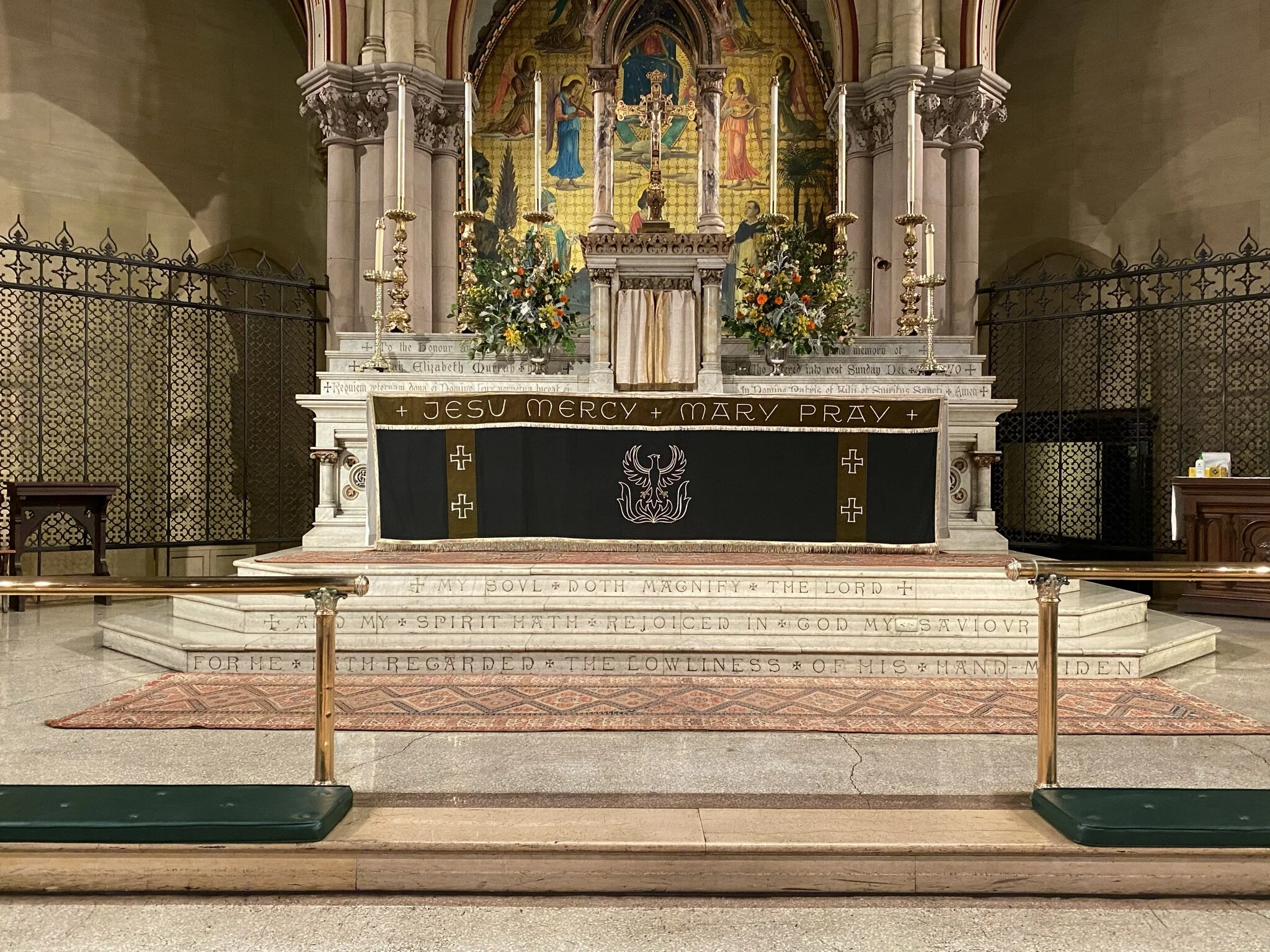
FROM THE RECTOR: DAILY COLLECTS
Since I went to Nashotah House Seminary in the fall of 1980, my ordinary experience of Daily Morning and Evening Prayer has been in church with others, five or six days a week, most weeks of the year. Before the pandemic, I rarely prayed the office on my days off. On Saturday evenings, when I am off and at home, I go to the church for Evening Prayer—it’s Sunday’s eve. When I’m away from home, I’m more likely to pray Morning Prayer than Evening Prayer—and, if I skip the offices, I don’t beat myself up. During the pandemic, there are days when Father Jay Smith or I will pray aloud the Angelus (while ringing the tolling bell) and the evening office in the church alone. Occasionally, the friars will pray Evening Prayer in the friary chapel when Jay and I are not here.
Read MoreVolume 22, Number 49

FROM THE RECTOR: ALL SAINTS’ DAY
All Saints’ Day is Sunday, November 1, this year. Monday, November 2, is All Souls’ Day. Parish Requiems will be celebrated daily beginning Tuesday, November 3, through Saturday, November 7. If you are new to the parish community, you may not know that a large number of friends of Saint Mary’s ask for loved ones to be remembered at a Eucharist here during the week of All Saints’ and All Souls’. The earliest Christians, like much of Mediterranean world at that time, gathered at graves to share food and wine on the anniversaries of the departed. The departed were alive in Christ. In the fourth century, Ambrose in Milan and Augustine in North Africa would attempt to take control over these customs (Peter Brown, The Cult of the Saints [1981], 26). I think one can say that burying a loved one and gathering afterwards with family and friends for food and drink is defining characteristic of humankind. I continue to believe that the faithful departed, and those whose faith is known only to God, do not feel separation from us. I believe their love for us continues, as does our love for them.
Read MoreVolume 22, Number 48

FROM THE RECTOR: NOVEMBER AND DECEMBER
Since March, with the closing of places of worship in New York, I’ve tried to take things one month at a time. COVID-19 has reordered so much of our lives, including worship. For me, safe distancing in a church means fewer people can be together. It’s not ideal, but Sunday Eucharists with our organist, a cantor, a crucifer, and a thurifer, keeps us linked to Saint Mary’s traditions and are a promise for renewing them in the New Year. Our weekday Eucharists also touch as many bases, as it were, as we can at present. November and December are upon us. I think it’s time to announce what we will be doing on the greater feast days fall in November and December.
Read MoreVolume 22, Number 47
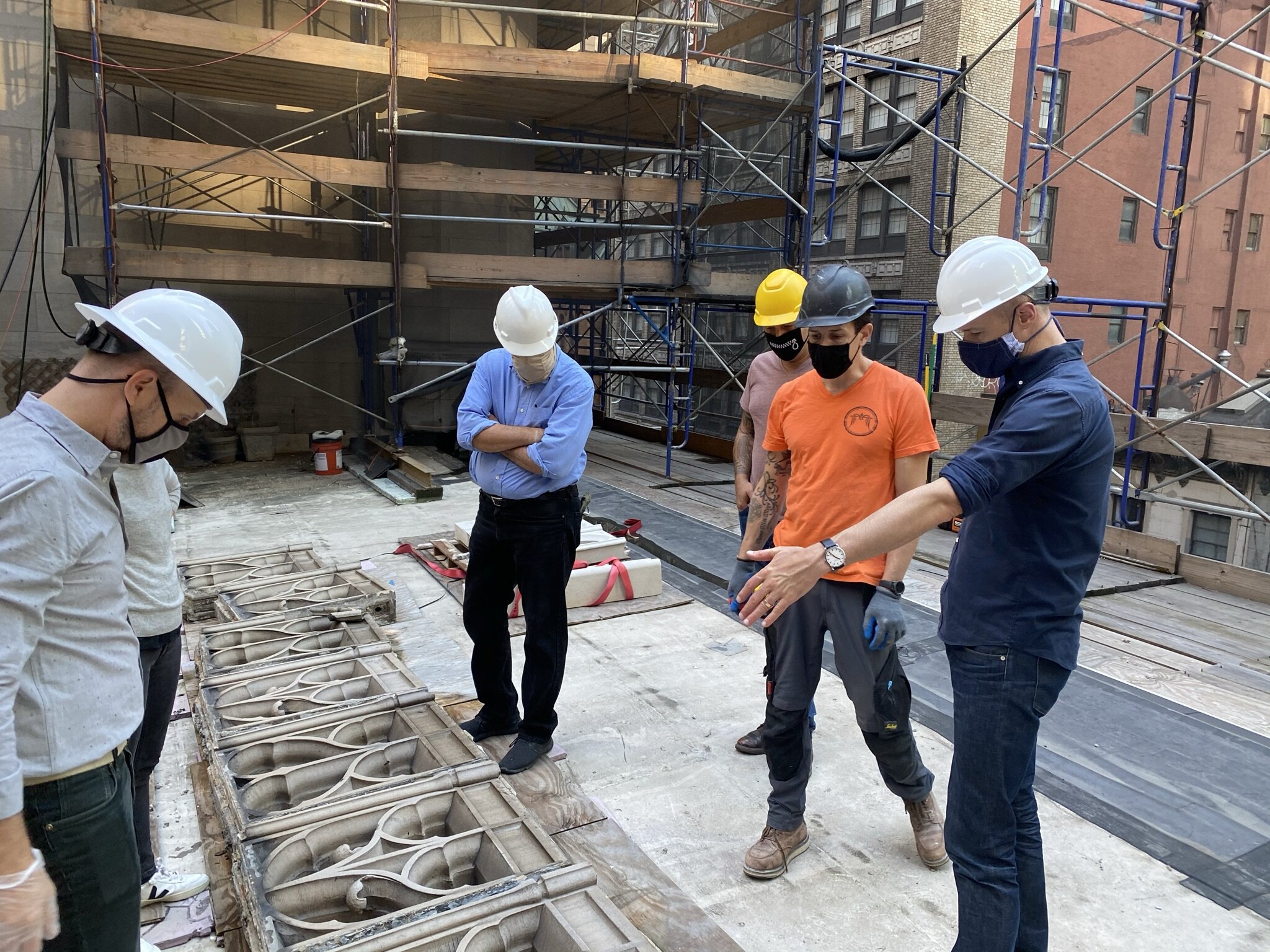
FROM THE RECTOR: ANOTHER VIEW OF SAINT MARY’S
On Thursday morning, October 15, Parish Treasurer Clark Mitchell and I went with our architect Michael Devonshire and his team from Jan Hird Pokorny Associates and Marko Golubovic and Josip Mars from Milan Restoration to view the work in progress up close. We started by climbing out a window on the second floor of the parish house to the scaffolding that rises higher than the roof of the church. On the scaffolding, we looked first at the recently painted windows of the parish house and saw samples of cast stone for the architects to review. Cast stone will be used where needed. Then we began the climb.
Read MoreVolume 22, Number 46
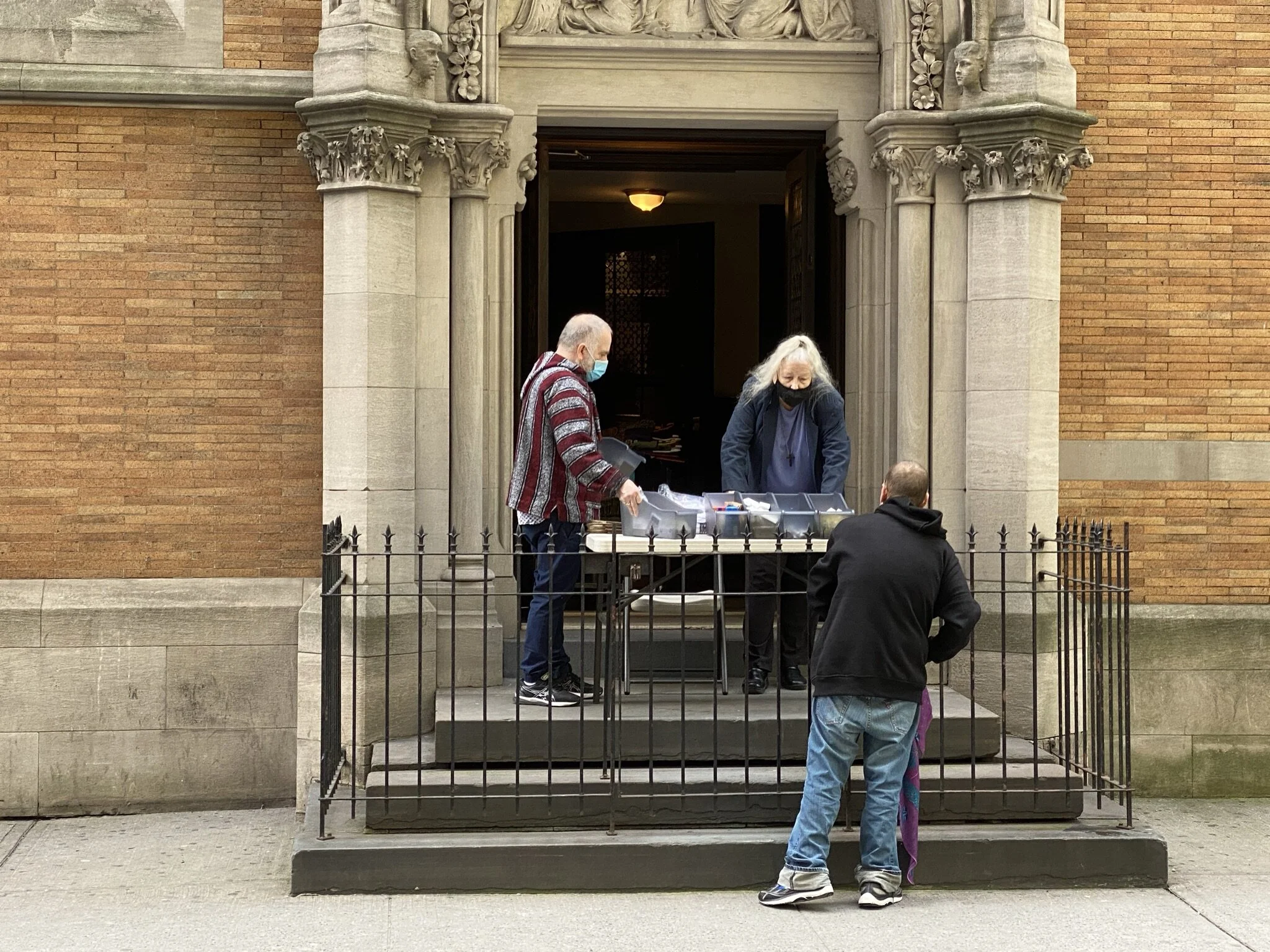
FROM THE RECTOR: SATURDAYS OF OUR LADY
When Father Thomas McKee Brown, Saint Mary’s first rector, died on December 19, 1898, the parish community and many others mourned. He died in the rectory from pneumonia. In one of the meetings of the Saint Mary’s board of trustees in January 1899, there was a report about which vestments then in use were “property of the corporation” or personal property of Father Brown. The practice of Saturday Masses in honor of the Blessed Virgin Mary went back to the beginning of the parish in 1870 in the church at 228 West Forty-fifth Street. Newbury Halsted Frost Read, a member of the board of trustees from 1929 until he died in 1950, wrote an account of the parish that was published in 1931, The Story of St. Mary’s: The Society of the Free Church of St. Mary the Virgin, New York City, 1870–1931.
Volume 22, Number 45
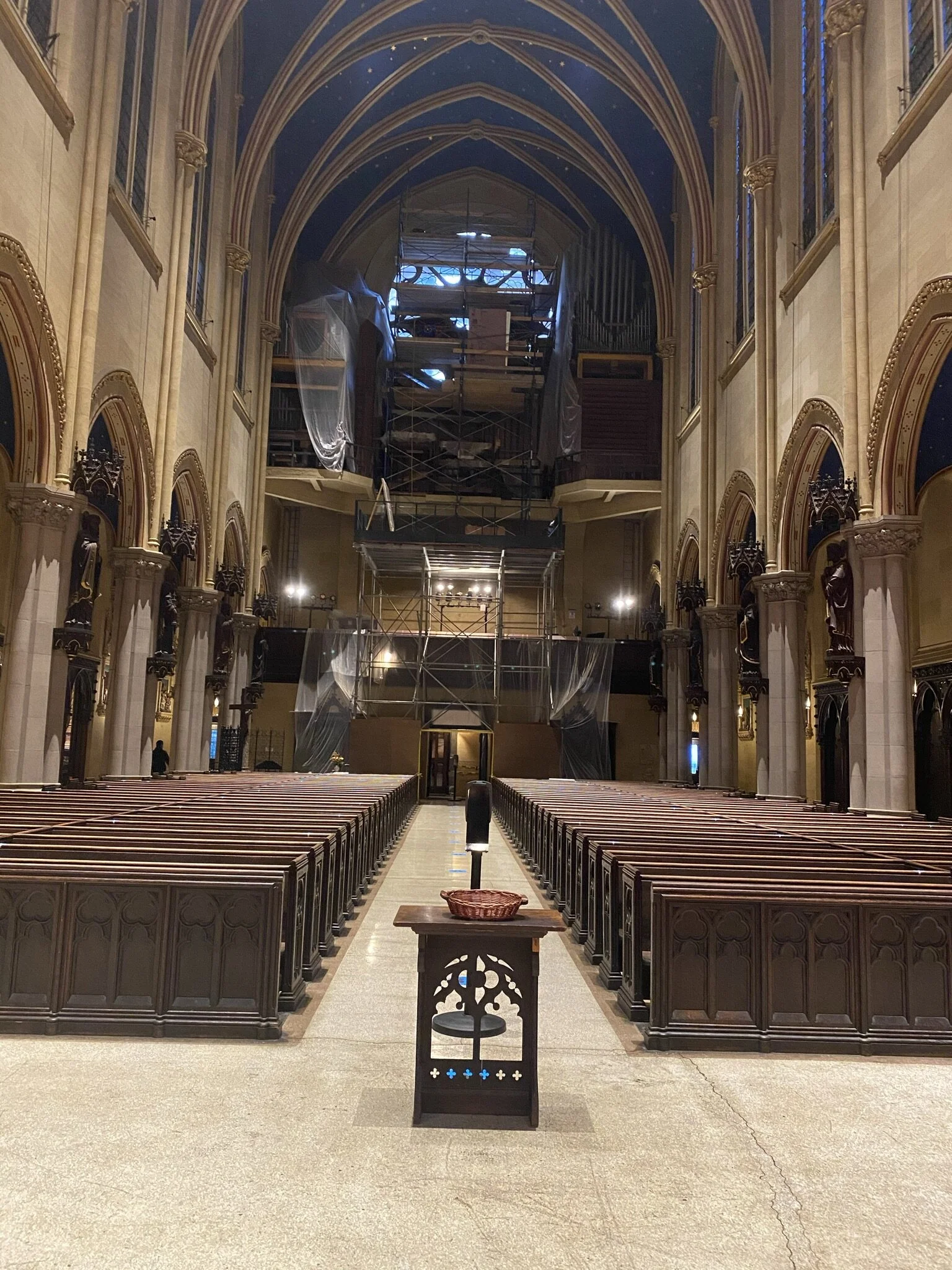
FROM THE RECTOR: ABOUT OCTOBER
Many congregations, including our cathedral, celebrate Saint Francis’ Day on a Sunday, whether it falls a Sunday or not. We commemorate Saint Francis on his feast day, October 4. Since the brothers of the Society of Saint Francis have established a house here at Saint Mary’s, it seems appropriate for us to celebrate Saint Francis this Sunday and for Br. Desmond Alban, Minster Provincial, Province of the Americas, Society of Saint Francis, to be our preacher.
Read MoreVolume 22, Number 44
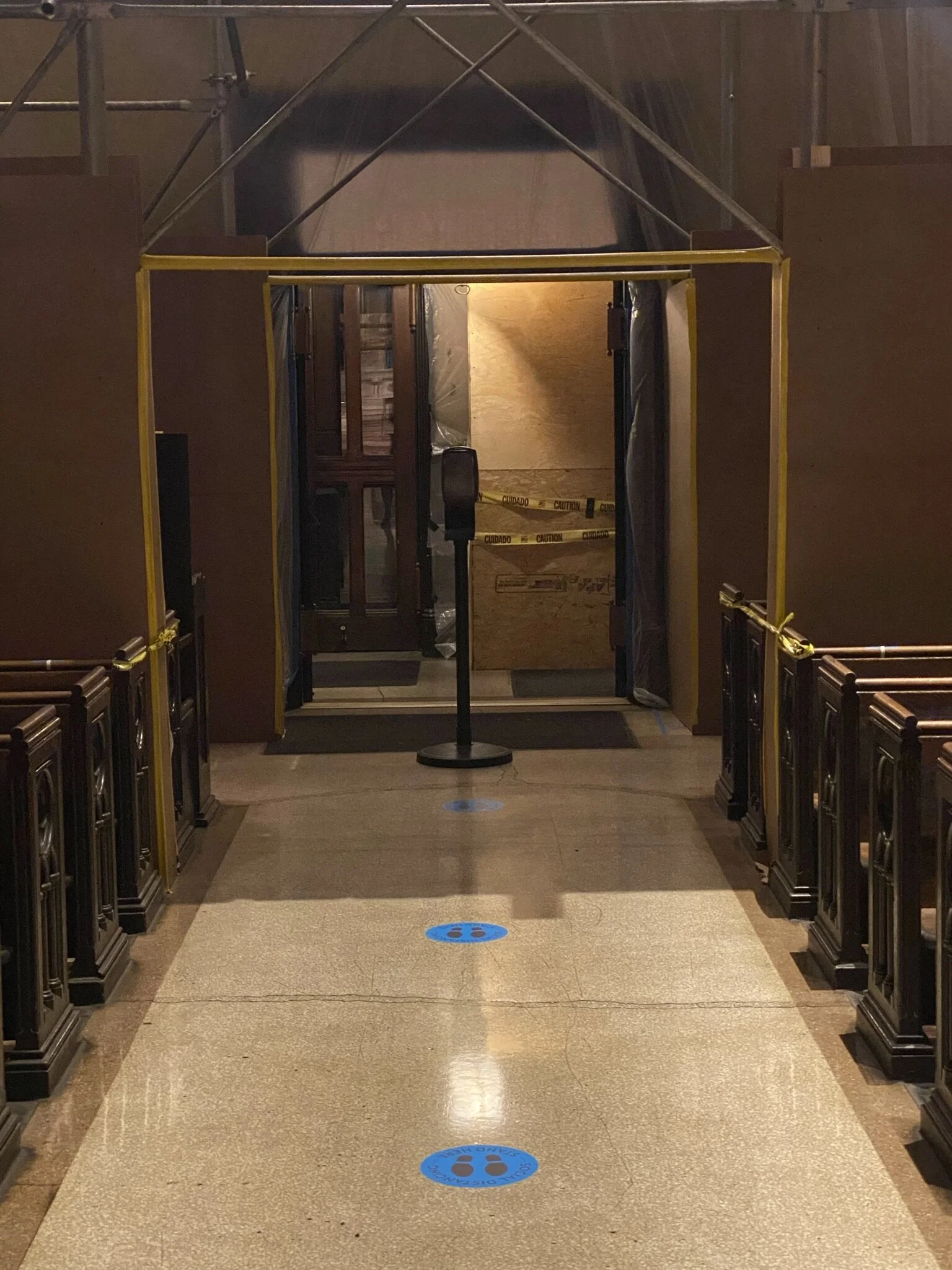
FROM THE RECTOR: BEQUESTS
Father Edgar Wells began sending me copies of the-then monthly parish paper Ave after I met him in the fall of 1980 at Nashotah House. The priest who sent me to seminary had been a seminarian for Father Wells when he was rector in Waukegan, Illinois. One of the regular features of Ave was this announcement:
Read MoreVolume 22, Number 43

FROM THE RECTOR: BREAD AGAIN
There have been many surprises for all of us since March. I want to tell you about a COVID-19 bread surprise. To do so, I need to go back to Lent 2010. In the Angelus, for the Second Sunday of Lent, March 7, 2010, I announced that we would be using bread, not hosts, and table wine for the Eucharist on Maundy Thursday. It was a special Holy Week for us. The Most Reverend Frank T. Griswold, XXV Presiding Bishop and Primate, would be celebrant and preacher for Good Friday and the Easter Vigil. On the morning of Maundy Thursday, he presided at the Eucharist at the Washington National Cathedral. He arrived at Saint Mary's in time to be in the congregation that evening. When he realized we had used bread and wine at the altar, he wanted to know if we could use it at the Easter Vigil. My answer was, “Yes, Bishop.”
Read More